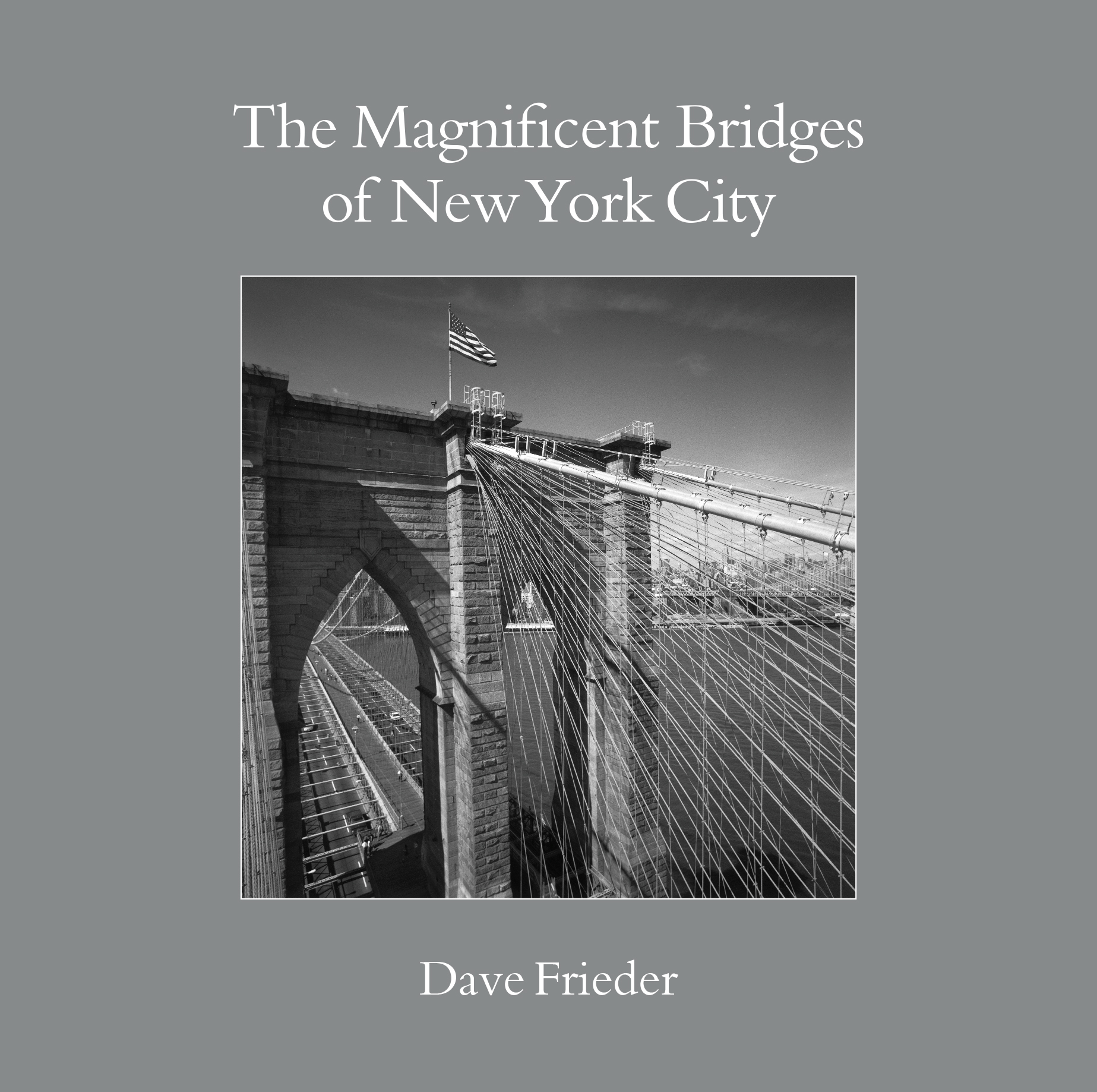By Dave Frieder
Published by Haynes Publishing
ISBN: 9780997382648
Price: US$60
www.davefrieder.com
New York City’s long-held status as an economic, artistic and cultural hub has seen it become home to some of the world’s most recognisable and historically important man-made structures. Bridges are no exception to this, with the Brooklyn Bridge holding National Historic Landmark status since 1964. The New York City Department of Transport owns, operates and maintains 788 bridges in total, but Dave Frieder’s focuses on 18 of them in his book, including one he took much of his early inspiration from as child, George Washington Bridge.
In the preface, Frieder writes about how his passion for photography and bridge structures converged in an idea to create a fine art coffee table book featuring NYC’s bridges as the subject matter. The 25-year journey to achieve this has culminated in a lovingly presented opus that exudes quality – from the cloth hardcover, to the glossy pages in between. Each of the 18 entries comprises a one-to-two-page description of the conceptualisation, construction and ongoing maintenance and use of the bridge. A helpful fast-facts box also gives readers easy access to important information, such as key dates and span lengths.
The descriptions are well written and succinct, but Frieder’s photos are the main attraction. In reference to this, he speaks of his disapproval of digital photography, saying he prefers to “work with the traditional method of photographing the world – film”. It could be said that he took things a step further by choosing to print all of the photos in black and white, but the decision is a masterstroke as the format accentuates the form of the bridges and helps the eye focus on the structural details. This even allows the inherent beauty of humble riveting to be brought to the fore in several close-up shots, including one of the Queens Tower on Bronx-Whitestone Bridge and another of the New Jersey Tower of Goethals Bridge. Through the monochrome approach, the photographer has been able to play with shadows to dramatic effect, sometimes allowing structural elements that are not even in shot to cast themselves into the image, thereby creating an immersive experience that colour photos would have struggled to emulate.
Frieder has clearly gone out of his way to seek unique vantage points, offering perspectives that are simply not available to the average bridge user. By giving readers the chance to experience these vistas through the lens of someone who has spent years studying and appreciating them, he portrays them in a new light, both literally and figuratively. Frieder says this was all possible thanks to his “determination” and “a voice inside that told me never to give up”, and surely parallels can be drawn with the ground-breaking engineers he lists at the back of the book, who, in the face of adversity, must have required similar resolve.
Khalifa Bokhammas





